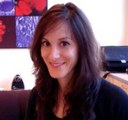Spotlight on Scientists: Dr. Nurit Argov-Argaman

Dr. Argaman spent the last year of her Ph.D. studies travelling in the United States and visiting a few labs that had offered her postdoctoral positions. While UC Davis and Dr. Bruce German’s lab was her last stop in the journey, she was quickly convinced that it was the best choice. After a short conversation with Dr. German, Dr. Argaman felt that his lab was the perfect fit for any postdoctoral scholar who wants to learn about foods and metabolism from a different and novel perspective. Dr. Argaman started in her new role with the Foods for Health Institute by studying the composition and structural differences between milk fat globules of different size in human milk. The aim of this project was to identify the compositional and structural differences between variously-sized milk fat globules and evaluate the nutritional and biological importance of these differences.
The first project she participated in was a breast milk collaboration with Dr. Sebastian Wachsmann-Hogiu from the Center for Biophotonics Science and Technology at UC Davis. This project was focused on characterizing the chemical fingerprints of milk fat globules of different sizes and produced a major finding by identifying nanoscale lipid particles devoid of a triglyceride core, which were given the name lactosomes. Dr. Argaman notes, “This was a novel finding since up to then, milk fat globules of all sizes were considered to be synthesized and secreted in the same manner which includes triglyceride droplet formation. According to the finding of Triglyceride free lipid particles in milk we hypothesized that these particles are parallel to plasma HDL.” These findings resulted in additional collaborative projects with other FFHI researchers and professors to identify whether milk lactosomes and plasma HDL are compositionally and functionally identical.
Dr. Argaman acknowledges that her collaboration with the Center for Biophotonics and the Chemistry Department at UC Davis had a huge influence on the methodology she now applies in her own lab. As a faculty member in the Department of Animal Science at Hebrew University of Jerusalem, she is working on lipid metabolism in the mammary gland by using models that are known to change milk fat content. Dr. Argaman hopes to identify the mechanisms controlling milk fat globule size distribution and, hence, milk fat composition.
Dr. Argaman credits her time spent in Dr. German’s group for revolutionizing the way she studies food, lipids and metabolism, and for providing scientific tools to study milk and lipids in a new, refreshing way. She also singles out Dr. German’s particular approach for changing the way she works with her own students and interprets findings and data.